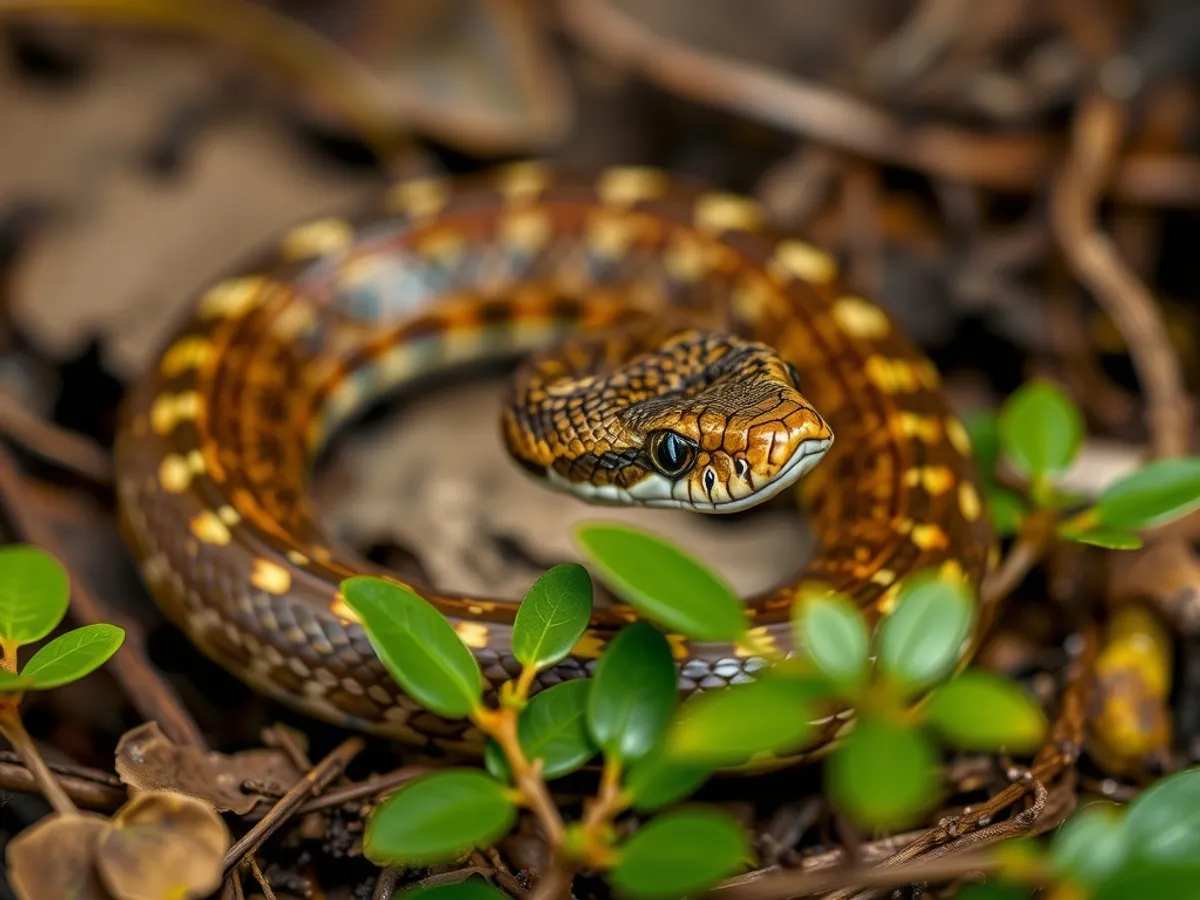
Brown tree snake
Boiga irregularis
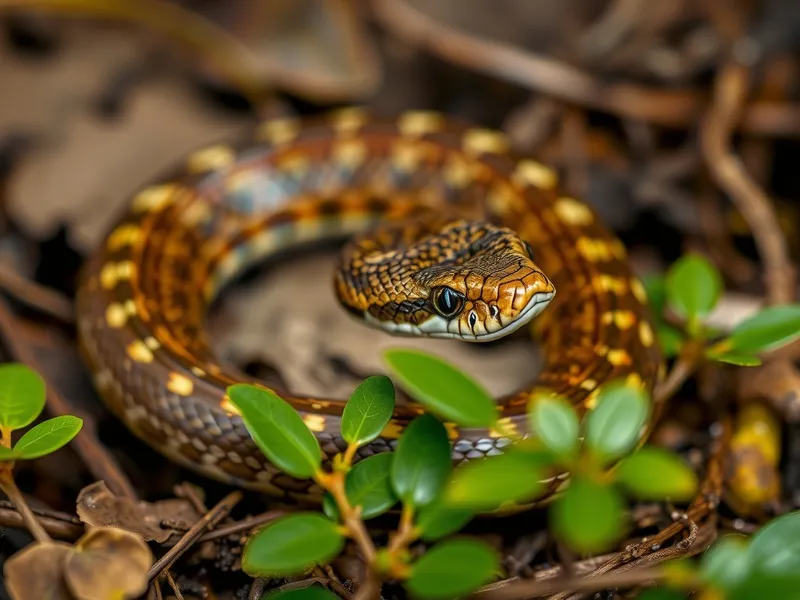
Meet the Brown tree snake
The brown tree snake is a slender, nocturnal, and highly arboreal colubrid native to northern and eastern Australia, Papua New Guinea, and parts of Melanesia. It is well known for its invasive population on the island of Guam, where it has caused significant ecological disruption by preying on native birds and small mammals. The snake exhibits a brown to olive coloration with dark crossbands, and it can grow up to 2 meters in length. Its rear-fanged venom is mild to humans but effective for subduing its prey. Brown tree snakes are agile climbers and are primarily active at night.
Classification
Reptile
Habitat
Forests, woodlands, and urban areas
Diet
Carnivore
Lifespan
10-15 years
Conservation
Least Concern
Weight
100-500 grams
📖Fascinating Facts
Arboreal Hunter
The brown tree snake spends much of its time in trees, hunting birds, lizards, and small mammals at night.
Rear-Fanged Venom
This snake is mildly venomous with rear fangs, using its venom mainly to subdue prey rather than for defense.
Invasive Impact
On Guam, the brown tree snake has caused the extinction of over half of the island’s native bird species.
📋Detailed Description
The brown tree snake (Boiga irregularis) is a slender, elongated colubrid snake characterized by a laterally compressed body and a distinct head with large eyes and vertical pupils, adaptations that enhance its nocturnal vision. Adults typically range from 1 to 2 meters in length, though some individuals may exceed this, with females generally being larger than males. The dorsal coloration is highly variable, ranging from brown and olive to reddish or even greenish hues, often with irregular dark crossbands or blotches along the body. The ventral side is usually pale cream or yellowish. Its tail is prehensile, aiding in its arboreal lifestyle and allowing it to anchor itself while climbing or striking at prey. The species possesses enlarged rear fangs (opisthoglyphous dentition) and mild venom, which is primarily effective against small vertebrates but generally not dangerous to humans. Brown tree snakes are primarily nocturnal and arboreal but are also known to forage on the ground, especially in disturbed habitats. They are highly adaptable, thriving in a variety of environments, including forests, savannas, mangroves, plantations, and urban areas. Their invasive success on Guam is partly attributed to their ability to exploit human-modified landscapes and their generalist diet. Juveniles are similar in appearance to adults but are more slender and may exhibit brighter coloration.
💡 Did you know?
The brown tree snake's accidental introduction to Guam is considered one of the most devastating examples of invasive species impact, leading to the near-total loss of the island's native forest birds.
🔬Research & Sources
Wikipedia Summary
The brown tree snake, also known as the brown catsnake, is an arboreal rear-fanged colubrid snake native to eastern and northern coastal Australia, eastern Indonesia, Papua New Guinea, and many islands in northwestern Melanesia. The snake is slender, in order to facilitate climbing, and can reach up to 2 metres in length. Its coloration may also vary, some being brown, green, or even red. Brown tree snakes prey on many things, ranging from invertebrates to birds, and even some smaller mammals. It is one of the very few colubrids found in Australia, where elapids are more common. Due to an accidental introduction after the events of World War II, this snake is now infamous for being an invasive species responsible for extirpating the majority of the native bird population in Guam. Currently, efforts are being made to reduce and control the population on Guam and prevent the snake from spreading to other locations. Researchers are employing various methods including aerial baiting to attempt to control the population while various agencies continue to fund and support the removal of the species.
Last Modified: 6/4/2025
🎭Behavior & Social Structure
Brown tree snakes are solitary and primarily nocturnal, emerging at dusk to hunt and explore. They are highly active and agile climbers, often seen moving through tree canopies, shrubs, and even human structures in search of prey. Their hunting strategy involves both active foraging and ambush; they use their keen sense of smell and vision to locate prey, which includes birds, lizards, small mammals, bats, and occasionally eggs. They subdue prey using a combination of constriction and envenomation via their rear fangs. Brown tree snakes are known for their exploratory behavior and ability to squeeze through small openings, which has facilitated their spread as stowaways in cargo. They are generally non-aggressive toward humans but may bite if provoked. During the day, they seek shelter in tree hollows, crevices, or dense vegetation. There is little evidence of social structure or cooperative behavior; individuals are territorial and may display defensive behaviors such as body coiling, hissing, and striking when threatened.
👶Reproduction & Life Cycle
Brown tree snakes are oviparous, with breeding occurring primarily during the wet season, although reproductive activity can occur year-round in some regions. Females lay clutches of 4 to 12 elongated, leathery eggs in concealed, humid locations such as tree hollows, rock crevices, or abandoned nests. The incubation period ranges from 60 to 90 days, depending on environmental conditions. Females may lay multiple clutches per year if resources are abundant. There is no parental care after egg deposition; hatchlings are fully independent upon emergence and are capable of hunting small prey. Sexual maturity is typically reached within 2 to 3 years. Invasive populations, such as those on Guam, may exhibit higher reproductive output due to abundant food resources and lack of natural predators.
🛡️Adaptations & Survival
The brown tree snake exhibits several key adaptations for arboreal and nocturnal life. Its slender, laterally compressed body and prehensile tail enable efficient climbing and maneuvering through complex vegetation. Enlarged eyes with vertical pupils enhance low-light vision, critical for nocturnal hunting. The rear-fanged (opisthoglyphous) dentition allows the snake to deliver venom to subdue prey, particularly birds and small mammals. Its highly flexible jaws and expandable body enable it to consume prey items much larger than its head. Behavioral plasticity and a generalist diet allow it to exploit a wide range of habitats and food sources, contributing to its invasive potential. The ability to survive extended periods without food and to reproduce multiple times per year further enhances its resilience.
📚Research Sources
🎨Cultural Significance
In its native range, the brown tree snake has limited cultural significance and is not commonly featured in indigenous folklore or traditional medicine. However, its notoriety as an invasive species on Guam has made it a symbol of ecological disruption and the unintended consequences of human-mediated species introductions. It has become a focus of public education campaigns and scientific research, and is often cited in discussions about invasive species management and biosecurity.
🔬Recent Research & Discoveries
Recent research has focused on the ecological impacts of brown tree snake invasion, particularly the cascading effects on Guam's ecosystem, such as increased spider populations due to the loss of avian predators. Studies have examined the snake's reproductive biology, population genetics, and dispersal mechanisms to inform control strategies. Innovative management techniques, such as aerial baiting with acetaminophen-laced mice, have shown promise in reducing snake numbers. Ongoing research also investigates the snake's sensory biology, including chemosensory and visual adaptations, and its potential to invade new territories. Genetic studies have revealed low genetic diversity in invasive populations, suggesting a founder effect but also highlighting the species' remarkable adaptability.
🎥Wildlife Videos
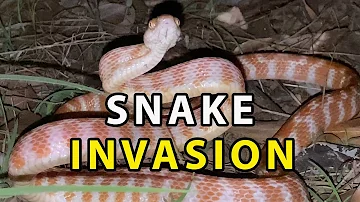
SNAKE INVADER! The Brown Tree Snake
Information about the brown tree snake and it's invasion of Guam. BROWN TREE SNAKE (Boiga irregularis) The brown tree ...
Wild Snakes

Wildlife - Just Reptiles | Free Documentary Nature
Wildlife - Episode 3: Just Reptiles | Wildlife Documentary Watch 'Wildlife - Episode 4' here: https://youtu.be/SNRyvGzDsww ...
Free Documentary - Nature
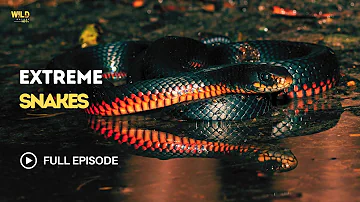
Extreme Snakes | Australia | Full episode | Animal documentary
Discover how the snakes of Australia evolved of millions of years. Explore diverse ecosystems, witness the behavior of ...
WildNature HDTv
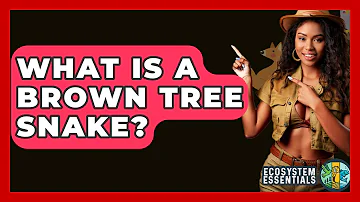
What Is A Brown Tree Snake? - Ecosystem Essentials
What Is A Brown Tree Snake? In this informative video, we will explore the brown tree snake, a species that has had a profound ...
EcosystemEssentials

Wildlife Instincts: Survival Techniques - Iguana vs. Basilisk | Free Documentary Nature
Wildlife Instincts - Episode 2: Survival Techniques - Iguana vs Basilisk | Free Documentary Nature Watch "Wildlife Instincts: The ...
Free Documentary - Nature
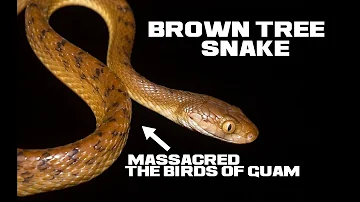
10 Brown Tree Snake Facts - Invader of Guam - Animal a Day
Today we learn about the slippery, sly, genocider of the animals of Guam, the brown tree snake. I'm still sick, but I'm sounding ...
Animal a Day
🌍Habitat Information
The Brown tree snake typically inhabits Forests, woodlands, and urban areas environments. Brown tree snakes have adapted to their environments with specialized features and behaviors.
Primary Habitat:
Forests, woodlands, and urban areas
More detailed habitat information will be available soon.
🛡️Conservation Status
The Brown tree snake is currently classified as Least Concern. Conservation efforts are crucial for preserving this species for future generations.
Common Threats:
- 🏠Habitat loss and fragmentation
- 🌡️Climate change impacts
- 🎯Hunting and poaching
- 🏭Human-wildlife conflict
⚠️Threats & Conservation Challenges
In its native range, the brown tree snake faces predation from birds of prey, large mammals, and other snakes, as well as habitat loss due to deforestation and urbanization. However, it is not considered threatened and is classified as Least Concern by the IUCN. Invasive populations, particularly on Guam, present significant ecological challenges, having caused the extirpation of most native forest bird species and declines in small mammal and lizard populations. Control efforts include trapping, canine detection teams, and aerial distribution of toxic baits (acetaminophen-laced mice). The species poses a risk of further spread to other Pacific islands via cargo shipments, necessitating ongoing biosecurity measures. Human-snake conflict is generally limited to nuisance encounters and occasional bites, which are rarely medically significant.
🔬Scientific Classification
Scientific Name
Boiga irregularis
Classification Hierarchy
🔍 About Taxonomic Classification
Taxonomic classification is a hierarchical system used by scientists to classify and organize living organisms based on shared characteristics and evolutionary relationships.
The system moves from broad categories (Kingdom) to increasingly specific ones, with each animal's scientific name typically consisting of its Genus and species.
📝Community Notes
Share your observations and insights about the Brown tree snake with our community of wildlife enthusiasts.
Join Our Community
Sign in to share your observations and connect with fellow wildlife enthusiasts.
Sign In to ContributeNo community notes yet
Be the first to share your observations about the Brown tree snake!
Explore Brown tree snake
Select a tab above to learn more about this amazing animal.
📸Photo Gallery
No photos available for this animal yet.
🌟Discover More Wildlife
Continue your journey of discovery with more fascinating animals from our database
